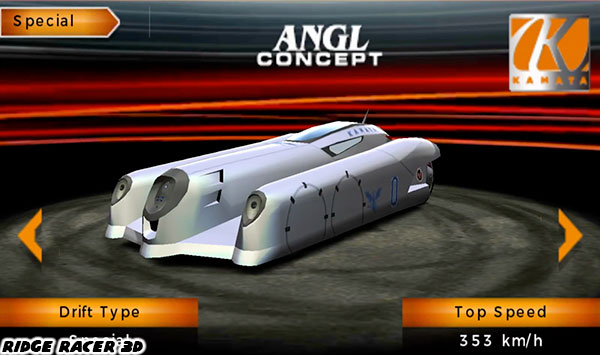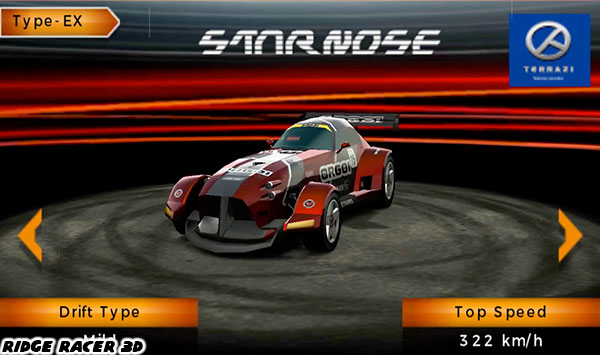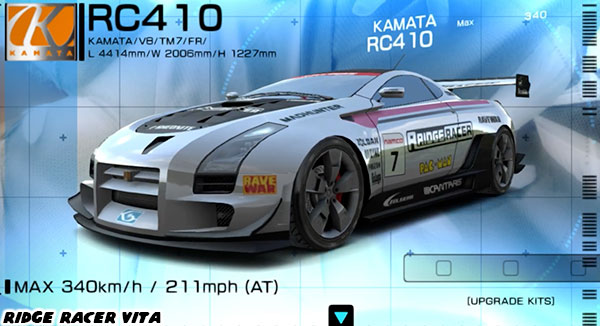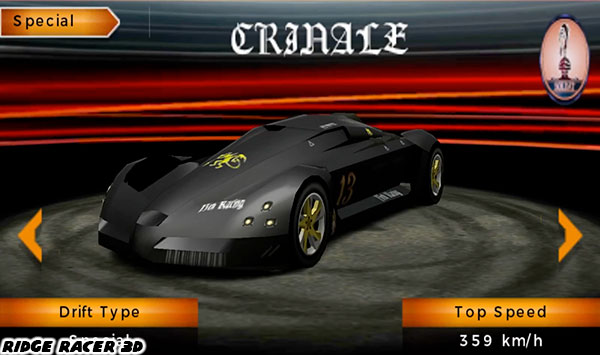The term super car has been used many times over the course of this series. Most often it was meant to define the insanely expensive cars, usually handmade from a foreign manufacturer. These were cars that were made in very small numbers for the most elite collectors. Some super cars however were actually made by manufacturers just for the reason of testing out experimental technology that they wanted to use on production cars 5 or 10 years down the road. The most radical of these super cars were entered in endurance races. Running for 12 or 24 hours consecutively as fast and as hard as they could was the ultimate test of reliability of new tech. The manufacturers also used these races to promote their brand. Concept cars may have been toured around the car show circuit but sometimes audiences could only see some cars once in an entire season on the racetrack. The 24 Hours at LeMans has specific car classes that they allow, known as the GT classes. These would represent a good portion of the car types that could be found in Ridge Racer and Gran Turismo respectively. Every now and then however they allow a car or two to compete out of any classification. These "unlimited" type cars are the ones that redefine the racing experience. Take for example the hybrid gas / electric cars from Audi and Toyota.

The companies had been trying to change the focus on their rivals as well as team owners. Fossil fuels were being depleted at an exponential rate and soon enough they would run out for consumers as well as manufacturers. They had to find ways to get the most out of the least amount of fuel. The sooner they could change the course of the race industry the better it would be for the world. To have race cars that were fast and powerful but used a fraction of the gas of traditional combustion engines was once thought a pipe dream. Race fans wouldn't stand to see small, lightweight cars creeping across the track at freeway speeds. The Audi R-18 Hybrid and Toyota TS030 Hybrid race cars had to hold up to the standards set by the previous unlimited cars. They had to include elements like windshield wipers, lights and turn signals, little details that amounted to important innovations in safety many years earlier. The radical designs, bold shapes and energy saving technology that both used would someday find their way to our actual rides. It was nice to see that the best engineers in the world were not always working on weapons or space exploration. Some of the technology that Audi and Toyota had produced would actually get shared with the scientific community and find its way into avionics and space vehicles.

The idea that a 4-wheeled race car had to be one particular shape or style was broken when Nissan also decided to create their own experimental model recently. The company had originally developed the
DeltaWing Racing Car to be an alternate to the more familiar Indy cars. It had a smaller engine that produced less horsepower and a smaller gas tank as well. The body, chassis and transmission also weighed much less than traditional race cars so the power to weight ratio was still favorable. The talks with the Indy people broke down and Nissan was left with a proof of concept. Rather than scrap their hard work they took the car to LeMans. Audiences and other drivers had a hard time wrapping their head around the design. It looked fast but could it perform? That was answered early on when it kept pace with the fastest GT1, 2 and 3 class cars and then began to pass them up lap after lap. Automotive journalists described the car as sticking to turns better than most wide-stance cars and accelerating through straightaways like a rocket. The all-black DeltaWing looked like a bat on the raceway, it had an intimidating profile that sparked the imagination. If I didn't know better I would stay that life was imitating art. It was reminiscent of the Devil 13 from Ridge Racer. Yet if that was the case then where was the Angel 0?

Not long after the DeltaWing project started the next evolutionary step for green race cars would appear. The all-electric
Nissan ZEOD RC race car would bless race fans and environmentalists with a glimpse of what could be. There was no doubt about it, good and evil had been personified on the track. Each car reflection of the other. Namco predicted the trend of super cars with completely new propulsion systems and dramatic body shapes decades earlier. Yet where Nissan would innovate there would still be people from the private sector willing to push the envelope even further.

Where Indy and the other racing leagues weren't sure if the world was ready to see a DeltaWing series Don Panoz of
Panoz autos saw the appeal right away. His company was one of the few super car builders in the USA. His company designs were always bold, even when compared to the contemporary Corvette and Viper performance cars. The look that the Nissan engineers had captured was as revolutionary as the designers at Panoz. Don knew that he would have to move in quickly and capitalize on the car before the parent company decided to scuttle their work. Where Nissan saw a limited future for the DeltaWing the American saw a potential for a new breed of race car, and perhaps one day even a consumer version.

It would not be the first time that an independent businessman tried to redefine the industry. Preston Tucker, John DeLorean and Carrol Shelby all did their fair share as well. They were visionaries that wanted to bring race track performance, award winning looks and innovative safety features to the public. There was resistance from the auto industry, rivals and even politicians for some of the most brilliant minds. In the end evolution could not be stopped. Cars got sleeker, faster and safer over the past century and counting. Some of the library of vehicles featured in Ridge Racer celebrated the most innovative prototypes ever created. The developers at Namco were free to run wild with as many ideas as they wanted, yet they somehow ended up coming up with cars that audiences would believe might someday run in futuristic races.

The designers at Namco became very good at predicting trends. They would introduce new prototypes into the series which, like the DeltaWing, could barely be called a car. The most science fiction type designs featured in Ridge Racer did have four wheels. Yet in some rare cases there were also cars with no wheels. The auto industry had been creating concept and production cars that hid the wheels since the turn of the 20th century. In newer concept cars some manufacturers tried to rethink the way that cars had been presented for over a century. The boldest designs from companies like Acura and Lotus actually had the cabin suspended from the shock absorbers rather than sitting on top of them. The Acura LMX (Living Machine Experiment) Concept car was toured in 2008. The Lotus Extreme Off-Roader was a concept car from 2012. The traditional chassis had gone out the window and racers sat in pods to "pilot" rather than drive their cars. Namco had explored similar themes earlier. The Himmel 490B debuted in Ridge Racer 7 in 2006, proving that the studio was great at predicting trends. They handed the keys over to the wildest prototype designs only after fans had proved themselves by winning every other traditional class and circuit.

Of course there was an entirely separate world of performance autos that very few people ever knew about. Very early on in this series I talked about how concept cars were shown off in auto shows around the world. They were there to serve as a platform for the manufacturer. Perhaps the cars were meant to be on the road in 5 to 10 years. Sometimes even longer than that if at all. Race team owners, car dealership operators and the very wealthy would push the companies into production if the feedback was very strong for every new debut. Yet there were also power players, the wealthy super-elite, that could actually convince the most famous auto manufacturers to take on a private project.

These small few could actually convince the manufacturers to sell a concept car to a private collection. Throughout history there were a few super cars that not many auto fans knew about or ever saw, in most cases because there were very few versions of these cars ever produced. The Mercedes Lotec C1000 (which stood for 1000HP Carbon Fiber) from 1991 was an example of that. The concept car was financed by a wealthy Arab business man that wanted to own the fastest privately owned car in the world. In 1995 Ferrari released a extremely limited version of the F50 GT. Only three road legal models were built out of this race car and ended up with the most exclusive devotees. In 2012 the McLaren X-1 was commissioned by an anonymous wealthy collector. He tasked the company to develop a "timeless and classic elegance" super car. How much each of these rare cars went for was never revealed, needless to say they may have been the most expensive performance cars ever created.

Sometimes there are cars that exist outside of the realm of reality. Majid Al Attar, designer and promoter behind the Devel Sixteen claims that his sixteen cylinder ride can produce 5000 horsepower and outperform any supercar on the planet. This fighter-jet inspired ride debuted in the 2013 Dubai International Auto Show. Whether the car could actually live up to the hype would be determined if it were ever loaned out to an automotive journalist for thorough testing.

Namco never licensed the GT Unlimited-type cars or the super-wealthy one-off models. They did however create many vehicles that were in the vein of the above mentioned racers. In other racing games audiences would reach the limit of what was possible based on the cars of today and perhaps a concept car or two from different manufacturers. Ridge Racer would throw in a dozen prototypes from various fictional manufacturers plus exclusive racing versions of the most elite super cars from each manufacturer. In this way the most die-hard car fan would get a chance to pilot some very unusual but highly desirable rides. The "regular" cars featured in the series held up to the radical ideas from actual manufacturers. The next entry will look at how the west influenced the evolution of the rides featured in the series. I hope to see you back for that.
If you would like to sponsor me
please visit my Patreon page and consider donating each month, even as little as $1 would help make better blogs and even podcasts!





Screw it, I want to see a Ridge Racer game with real cars. Asphalt 8 is the closest we're getting to that.
ReplyDeleteI also want a 2015 Dodge Challenger so badly.
http://www.dodge.com/en/reveal/challenger/
I should also clarify the DeltaWing a bit. Panoz actually developed it as a new-generation Indy Car, but when the IndyCar series went in a different direction, then they went with Nissan to take it racing. The Zeod appears to be a blatant copy of the DeltaWing, and Panoz sued over that.
ReplyDelete